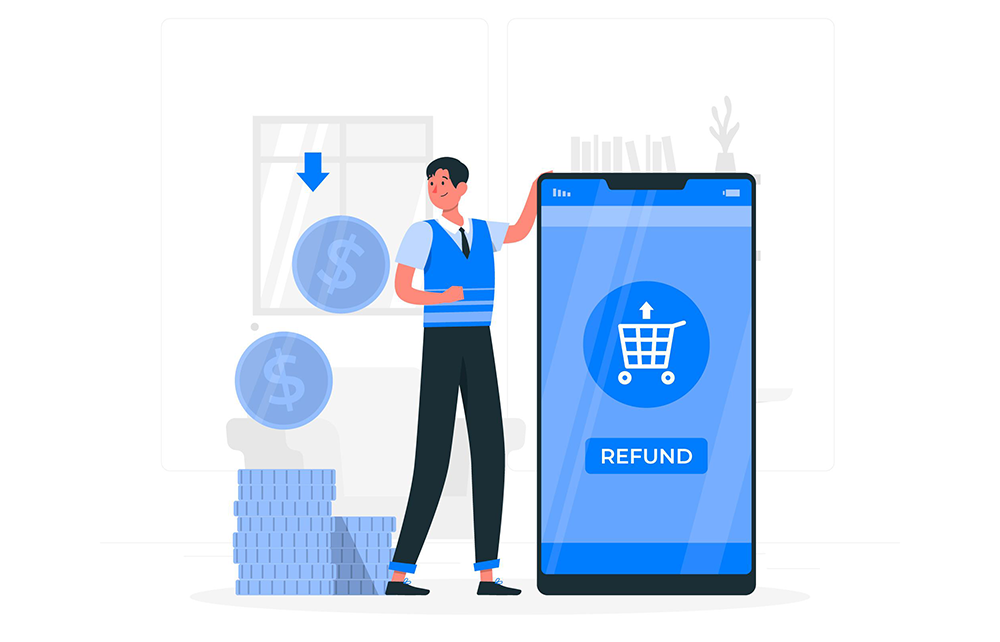
Why is having an effective marketplace refund policy crucial for your multi-vendor marketplace business?
If you’ve ever managed an e-commerce platform, then you already know that the worst part of making a sale is having said sale taken away from you. You do all the work, fine-tune your sales funnel, and ship the product… only to get the same product shipped back to you a few days later.
You’re not alone.
Shopify found that customers returned over $400 billion in 2020. That’s more than 10% of all sales. Unfortunately, as the e-commerce boom continues to shift consumer habits online, this trend will likely follow. Thus, marketplace operators will have to adapt to their customers’ needs, continuing to offer convenience and efficiency in every aspect, including returns.
We want to help you develop a marketplace refund policy that focuses on your customers so that you can still win them over even when a specific purchase doesn’t. Therefore, today’s article will highlight the value of a customer-centric refund policy, give you some practical ways to build one, and offer a few tips that can help you minimize refunds.
So let’s get cracking!
What Is A Customer-Centric Marketplace Refund Policy?
Finding success in e-commerce requires you to think about your customers above everything else. With so many options to choose from, the modern buyer simply doesn’t have much patience for a frustrating experience. Returns are no different.
At this point, returns are just a normal part of the e-commerce experience. Shoppers don’t have the opportunity to touch the product, see it in person, or try it on. Sometimes, they make the purchase just to see if they like the materials purchased. If they decide they don’t, they return it to the marketplace.
A customer-centric marketplace refund policy focuses on taking what could be a potentially negative experience – returning a product – into a positive one. It meets the customer where they are by understanding the normalcy of returns and trying to make them as simple as possible.

Why You Should Consider A Customer-Centric Approach For Your Online Marketplace
Some readers might think this sounds counterintuitive. Wouldn’t a complicated marketplace refund policy help reduce returns since customers won’t want to jump through hoops? A simpler, customer-centric approach would only increase returns!
While that thought may be true for one-off purchases, the overall mentality doesn’t jive with today’s consumers. They expect brands to try and meet their needs, and they’re only loyal to those that do. Providing a simpler marketplace refund policy helps instill the trust that’s necessary for long-term relationships that lead to repeat customers in the end.
In other words, if you want the quickest way to maximize a single sale, sure, go ahead and make your refund process impossible to figure out and difficult to navigate. However, if you want to create a lasting bond with your customers that gets them to keep buying products even after making some returns, then you might want to consider the customer-centric approach.
5 Ways To Build A Customer-Centric Refund Process
Building a customer-centric refund process requires a little bit of legwork from e-commerce stores. It’s especially challenging with marketplace sales because you have to ensure that each seller’s return policy aligns with yours.
Nonetheless, the effort is worth it, and we’ve got a few tips that can help you get started.
1. Don’t stress too much (or too little!) when an item gets sent back
The starting point to any good marketplace refund policy is to not take returns personally.
We’d all love to pretend that we leave our egos at home when we go to work, but getting a return request can feel like a slap in the face. It’s easy to assume that something went terribly wrong on our end or that we’ve lost that customer forever.
That’s not necessarily the case.
That being said, you should also be aware of what’s causing the return. If every customer is upset because the color doesn’t match the image, you might want to figure that out.

2. Offer free and easy returns
Your customers have already bought your product. They don’t want to spend more money just to send it back to you, even if they know they’ll get some of that back. This can end up feeling more like a partial refund than a complete one on their end.
Add that to the frustration of getting a shipping label and dealing with the mailing process (who wants to go to the post office?) and you’ve got a pretty bummer experience for your customers.
To fix this, think about the things you can do to make the process simpler while reducing costs.
Here are a few ideas to get you started:
- Offer a ready-to-go return label.
- Pay for return shipping.
- Accept returns with any packaging as long as the product isn’t damaged.
3. Keep communicating with customers
There are few things more frustrating than feeling like you have a problem that no one cares about. Unfortunately, this happens all the time with e-commerce brands.
Customers put in a return request and then (maybe) get a vague message that it’s being processed and then they don’t hear anything again. It leaves them confused and frustrated.
Putting in a little extra effort here can make your brand go above and beyond. Try things like:
- Providing a timeline for when they can expect a refund (the majority of customers expect 30 days or less)
- Updating them when the return is complete
- Checking in with a follow-up message

4. Have one marketplace refund policy and make it easy to find
Marketplaces have the extra challenge of managing multiple vendors‘ returns. Each seller may have a specific preference for how they would handle returns, but it is okay to establish a singular policy for your marketplace. Vendors will adapt.
You also shouldn’t expect your customers to go searching high and low for your marketplace refund policy. They want quick answers to their questions. Some may not even make a purchase unless they know how your marketplace will process returns. Thus, make sure to structure your website in such a way that the link to said policy is easy to spot.
5. Ask for (and implement) feedback
Want to know the best way to identify your customers’ needs?
Ask them.
All the research in the world won’t replace direct feedback. Send a survey to loyal customers. Ask questions to those who have returned a product. See where you can improve, and then, figure out how to make the changes they’re looking for.

5 Quick Tips For Minimizing Refunds
Refunds have become a common part of running an e-commerce marketplace. They’re always going to happen, but you can do a few things to help reduce their frequency including:
- Using high-quality photos in your product listings
- Providing a detailed description of each item
- Ensuring every product is tested for quality
- Incentivizing customer reviews
- Keeping the customer experience excellent
The best move, though, is the last one. Thus, do everything to keep your marketplace running smoothly, and make every step of the customer journey as convenient and pleasant as possible.
WC Vendors exists to help marketplace owners and operators build and scale their online businesses. Our platform makes it easy for you to work with vendors and impress buyers from initial impression to final sale and anything that comes after that.
To learn more about our product, feel free to contact us. We’d love to see how we can help you maximize your customer experiences at all stages of the buyer’s journey.
Conclusion
A great marketplace refund policy prioritizes the needs of your customers, turning a potentially negative experience into a positive one. Thus, if you want your multi-vendor platform to thrive, you should ensure that the returns process wins people over instead of turning them away.
To build a customer-centric marketplace refund policy, observe the following tips:
- Don’t stress too much (or too little!) when an item gets sent back
- Offer free and easy returns
- Keep communicating with customers
- Have one return policy and make it easy to find
- Ask for (and implement) feedback
Do you have any questions about creating an effective marketplace refund policy? Let us know in the comments section!
